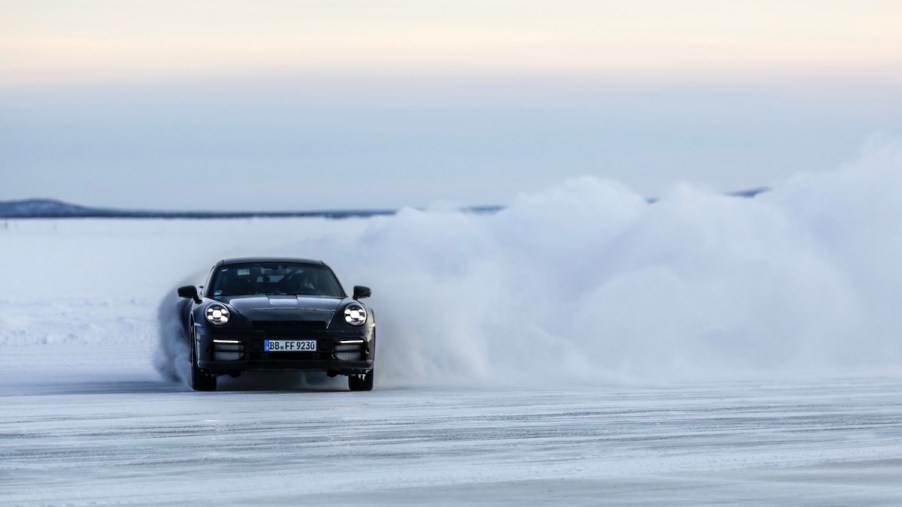
The New Porsche 911 Dakar Off-Roader Is a First for the Brand
The Porsche 911 is one of the German automaker’s most recognizable, lauded models. It boasts an impressive selection of flat-six engines and handling fine-tuned for optimum performance. This iconic sports car’s coupe and cabriolet body styles can also be equipped with all-wheel drive for confidence in various conditions. And soon, 911 enthusiasts can go off-pavement with ease. Here’s what we know about the Porsche 911 Dakar and how it compares to the standard model.
The Porsche 911 Dakar is the automaker’s first off-roading coupe

This special Porsche 911 comes standard with AWD, all-terrain tires, and a lifted suspension. The exterior also features a raisable spoiler and extra body cladding along the wheel arches. Porsche has reportedly fine-tuned the anti-lock braking system to brake quickly on rough and slick surfaces.
The 911 Dakar, previously known as the 911 Safari, has undergone over 6,200 miles of off-road testing. Even when tested to its limits, the engine can withstand extreme exterior temperatures of 113 degrees Fahrenheit. Porsche claims the car can also maintain traction on slippery sand and crest 50-meter dunes without issue.
Additionally, testers have driven the 911 Dakar extensively over packed snow in Sweden’s frozen lake areas. Porsche also tested this model on standard race tracks to ensure it has good handling on pavement. In total, the Porsche 911 Dakar has undergone 300,000 miles of performance tests.
Car and Driver expects this model will pack one of the Porsche 911’s existing engines. The standard twin-turbo V6 produces 379 hp and 311 lb-ft of torque, paired with an eight-speed automatic transmission. However, because the Dakar has GT3 styling up-front, it might share that model’s engine.
The Porsche 911 GT3’s flat-six doesn’t have turbo boosters, but it still provides an ample 502 hp and 346 lb-ft of torque. This engine mates with a seven-speed automatic or six-speed manual transmission.
In addition, the Dakar might provide the larger twin-turbo flat-six from the 911 Turbo trims. Under the hood of the Turbo S, this engine harnesses 640 hp and 590 lb-ft of torque.
What makes the Porsche 911 Dakar different from the standard model?

Not every Porsche 911 comes with AWD, but the most affordable model (the Carrera 4) with this drivetrain starts at $113,400. AWD is also included on the Carrera 4 GTS and 4S. And each Porsche 911 Targa, Targa 4S, and Targa 4 GTS has AWD.
Additionally, the standard Porsche 911 has performance summer tires instead of the all-season ones on the Dakar. The 911 has only about 4.3 inches of ground clearance; the Dakar might offer at least double that number. As of this writing, we’re unsure if the off-roader will be available with any of the 911’s existing performance packages.
How did the first AWD 911 get so popular?
The Porsche 911 was groundbreaking in 1984. For the car’s 20th model year, the automaker equipped a 911 with AWD to race in the Paris-Dakar rally. Porsche named the all-new 911 Dakar for this rally champion.
911 models with AWD later became available to consumers in 1988. Porsche introduced viscous coupling AWD for the 1994 model year, and the brand’s traction management system debuted for the 2002 model year.
Porsche will release more information about the Dakar’s off-roading enhancements upon the model’s Los Angeles Auto Show debut on November 16.


